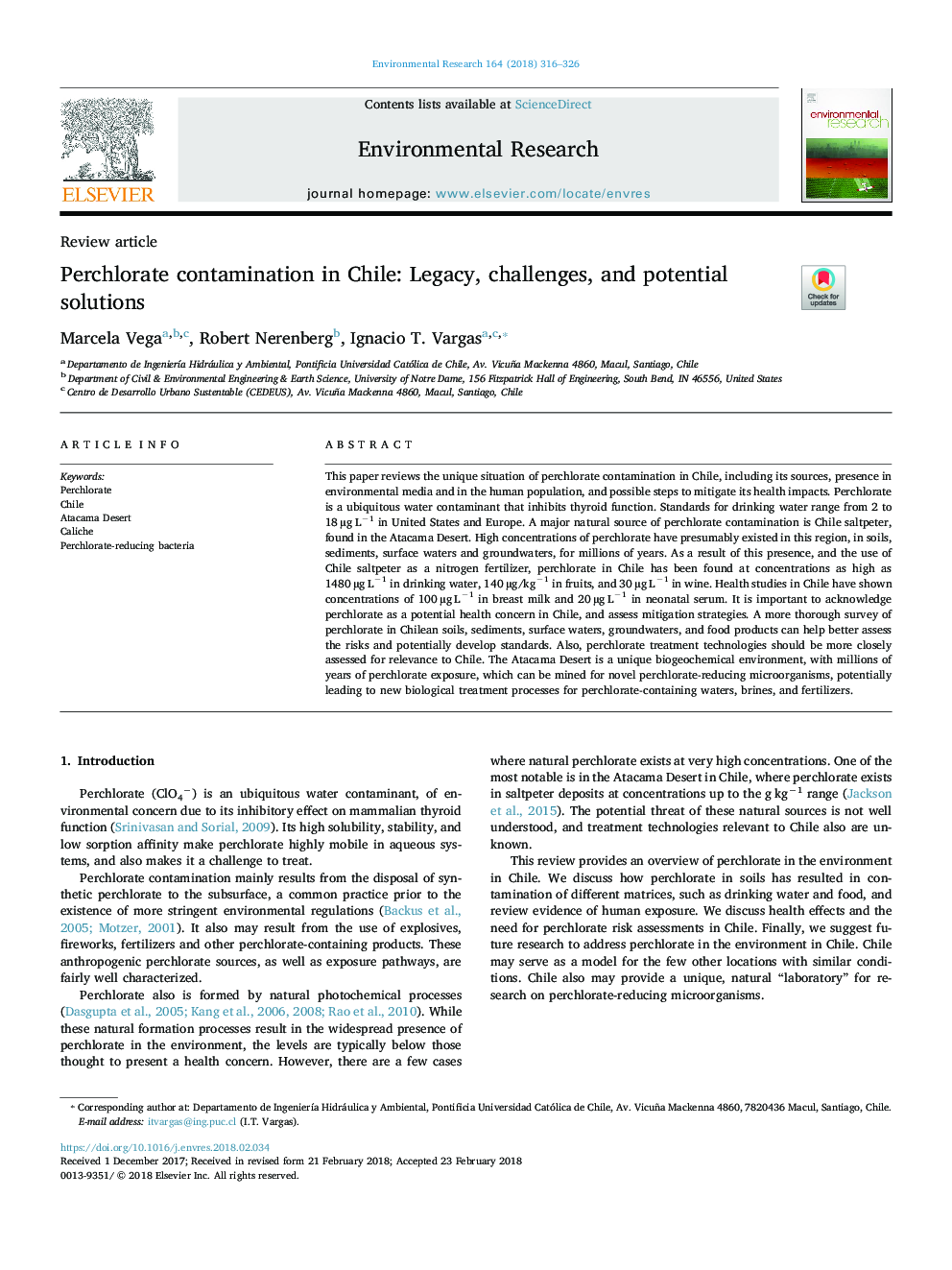| کد مقاله | کد نشریه | سال انتشار | مقاله انگلیسی | نسخه تمام متن |
|---|---|---|---|---|
| 8869056 | 1622539 | 2018 | 11 صفحه PDF | دانلود رایگان |
عنوان انگلیسی مقاله ISI
Perchlorate contamination in Chile: Legacy, challenges, and potential solutions
ترجمه فارسی عنوان
آلودگی پرکلرات در شیلی: میراث، چالش ها و راه حل های بالقوه
دانلود مقاله + سفارش ترجمه
دانلود مقاله ISI انگلیسی
رایگان برای ایرانیان
موضوعات مرتبط
علوم زیستی و بیوفناوری
علوم محیط زیست
بهداشت، سم شناسی و جهش زایی
چکیده انگلیسی
This paper reviews the unique situation of perchlorate contamination in Chile, including its sources, presence in environmental media and in the human population, and possible steps to mitigate its health impacts. Perchlorate is a ubiquitous water contaminant that inhibits thyroid function. Standards for drinking water range from 2 to 18â¯Âµgâ¯Lâ1 in United States and Europe. A major natural source of perchlorate contamination is Chile saltpeter, found in the Atacama Desert. High concentrations of perchlorate have presumably existed in this region, in soils, sediments, surface waters and groundwaters, for millions of years. As a result of this presence, and the use of Chile saltpeter as a nitrogen fertilizer, perchlorate in Chile has been found at concentrations as high as 1480â¯Âµgâ¯Lâ1 in drinking water, 140â¯Âµg/kgâ1 in fruits, and 30â¯Âµgâ¯Lâ1 in wine. Health studies in Chile have shown concentrations of 100â¯Âµgâ¯Lâ1 in breast milk and 20â¯Âµgâ¯Lâ1 in neonatal serum. It is important to acknowledge perchlorate as a potential health concern in Chile, and assess mitigation strategies. A more thorough survey of perchlorate in Chilean soils, sediments, surface waters, groundwaters, and food products can help better assess the risks and potentially develop standards. Also, perchlorate treatment technologies should be more closely assessed for relevance to Chile. The Atacama Desert is a unique biogeochemical environment, with millions of years of perchlorate exposure, which can be mined for novel perchlorate-reducing microorganisms, potentially leading to new biological treatment processes for perchlorate-containing waters, brines, and fertilizers.
ناشر
Database: Elsevier - ScienceDirect (ساینس دایرکت)
Journal: Environmental Research - Volume 164, July 2018, Pages 316-326
Journal: Environmental Research - Volume 164, July 2018, Pages 316-326
نویسندگان
Marcela Vega, Robert Nerenberg, Ignacio T. Vargas,
